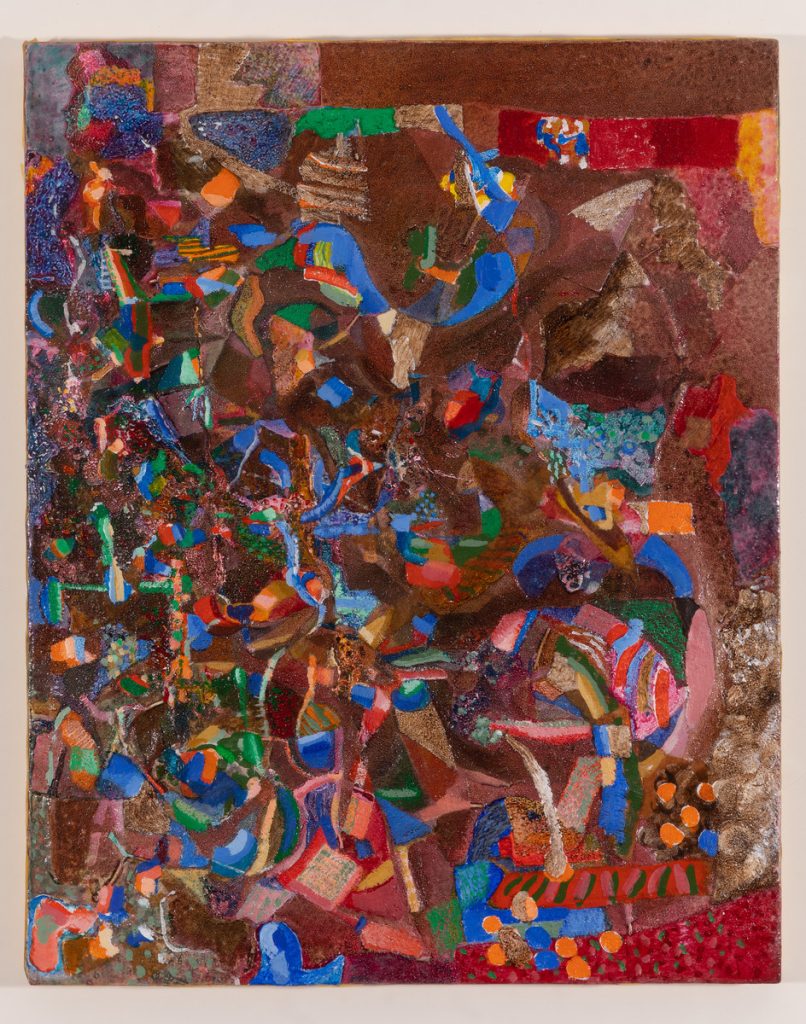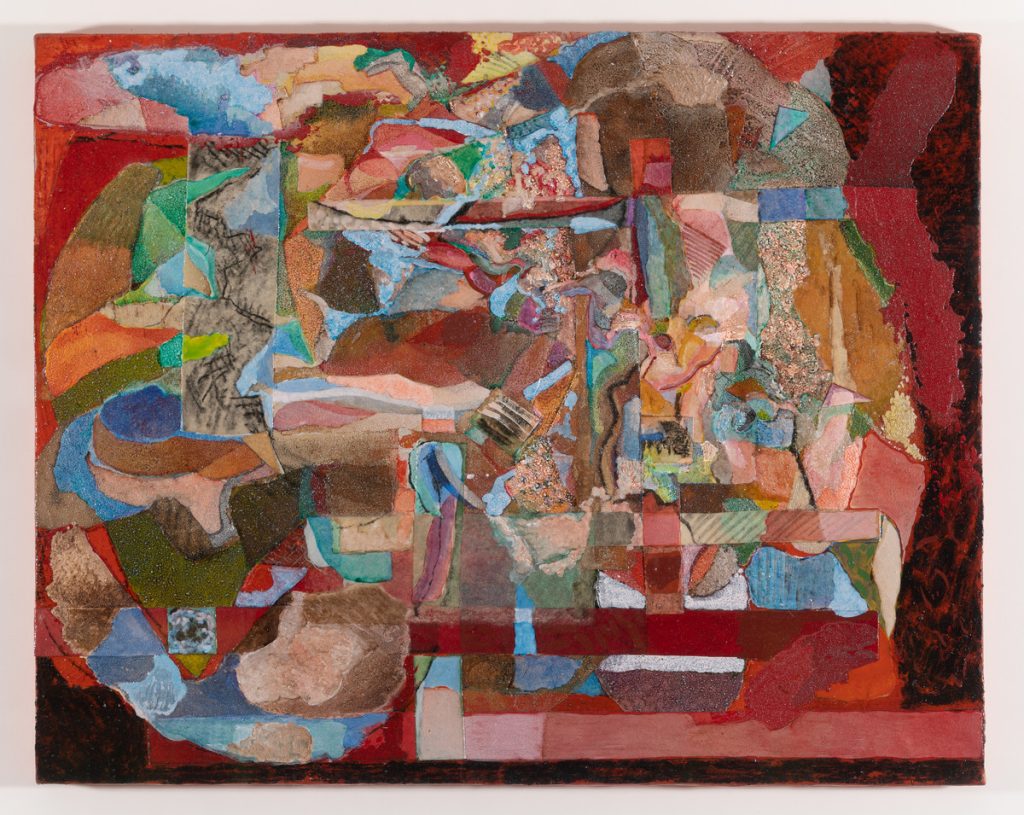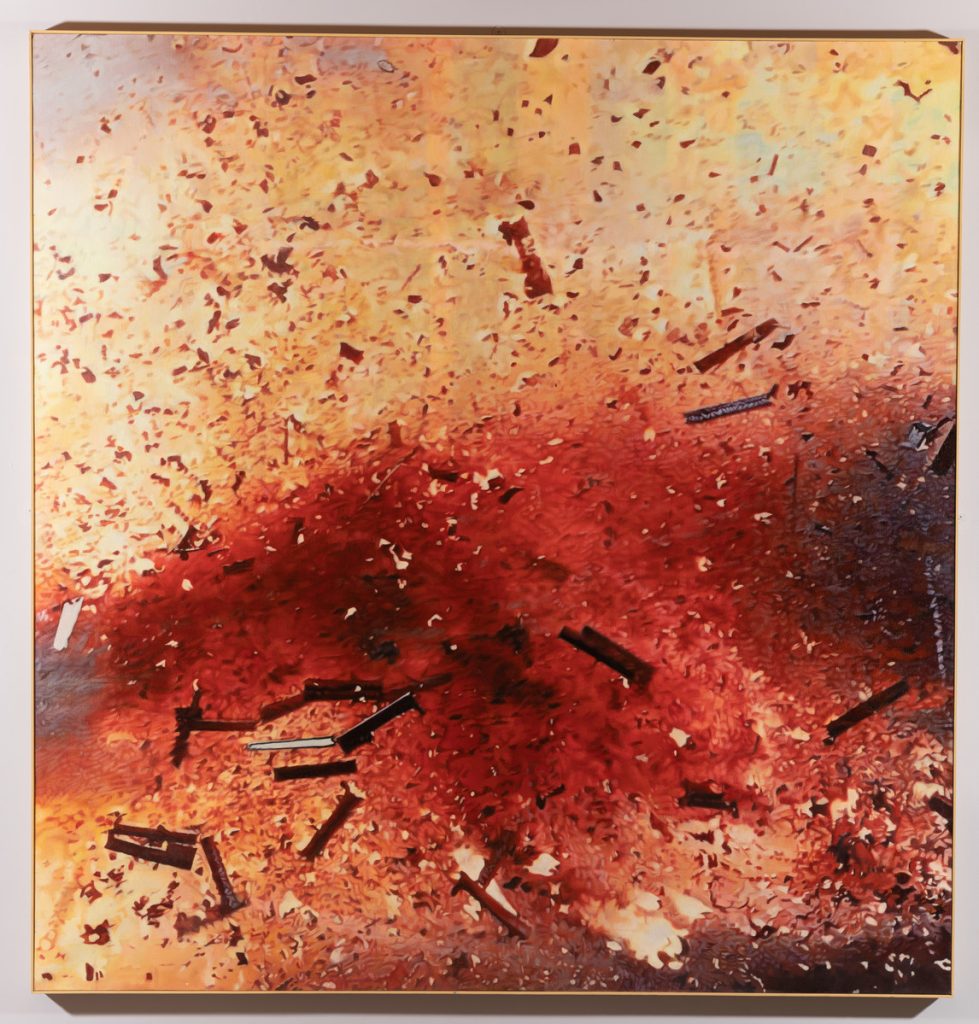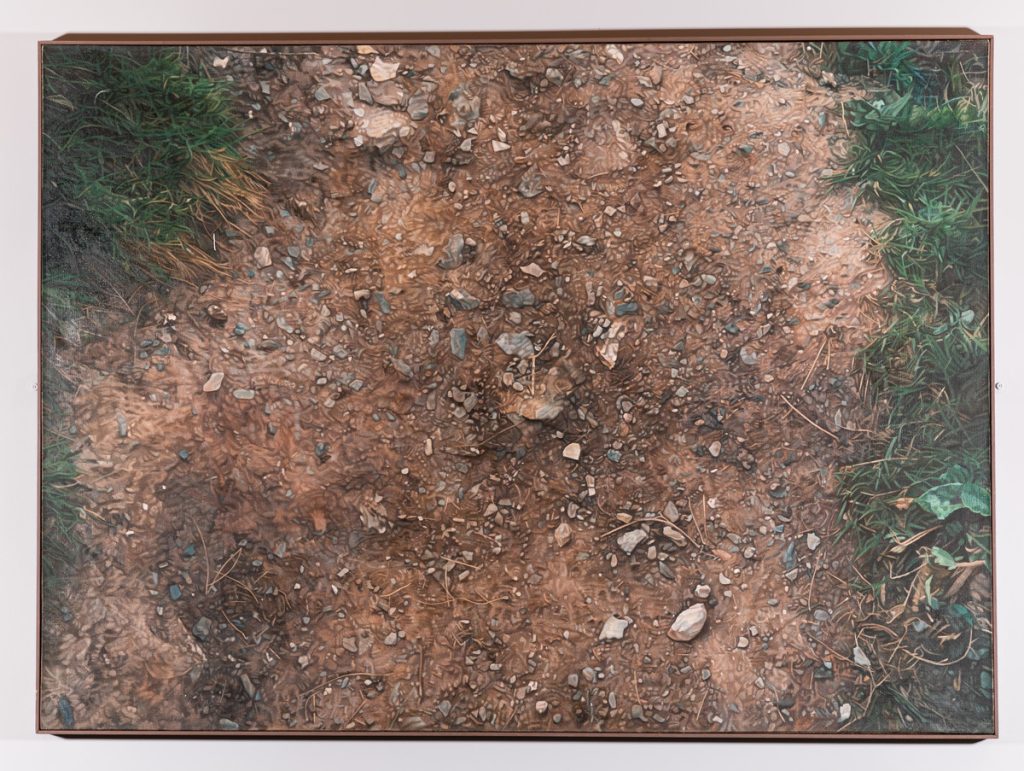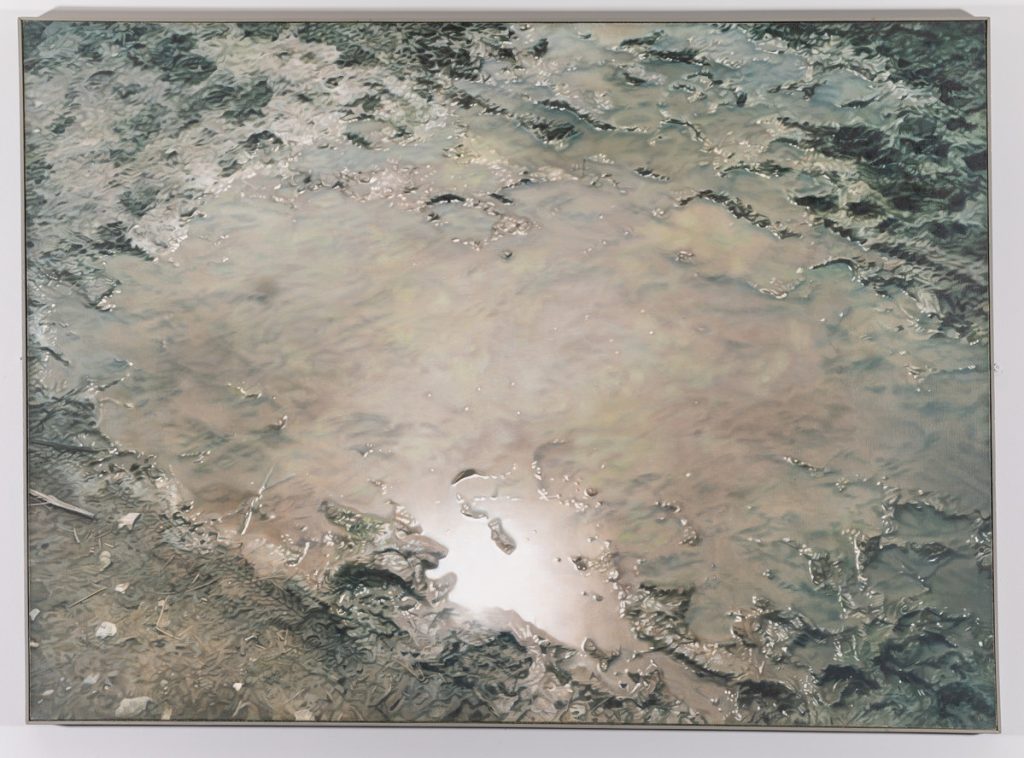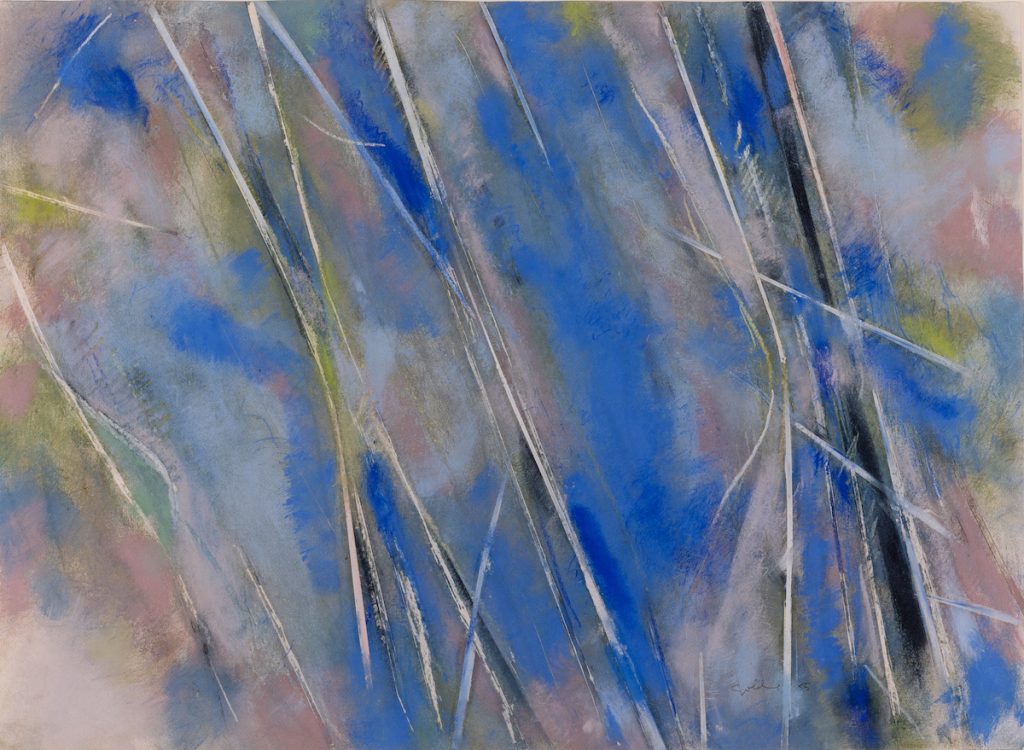
Leon Kossoff (1926-2019) studied at Saint Martin’s School of Art, Borough Polytechnic and, between 1953 and 1956, at the Royal College of Art, as well as attending evening life drawing classes at Toynbee Hall. In 1959, Kossoff started teaching at the Regent Street Polytechnic, the Chelsea School of Art, and the Saint Martin’s School of Art.
Kossoff’s paintings are recognisable for their exceptionally thick paint layers. He created his paintings in a single session and would return to paint the same subjects; often around the areas where he lived and worked, in Kilburn and Willesden. Known as one of the School of London painters, Kossoff helped revived figurative painting in the 1970s.

Peter Kalkhof’s (1933-2014) work was influenced by his interests in cultures outside of Europe and their use of geometry. Straight and curved lines, along with grids, circles and squares were staples in his practice.
Born in 1933 in Germany, Kalkhof studied painting at the School of Arts and Crafts, Braunschweig, and at the Academy of Fine Art, Stuttgart. He later studied at the Slade School of Art, London, and the École des Beaux-Arts, Paris. After moving to London in 1963, Kalkhof began teaching lithography and etching at the University of Reading the following year and was appointed Lecturer of Fine Art in 1966. He remained at the University for 35 years.
- Martin Froy, Landscape of Paper and String, 1979. UAC/10973.
- Martin Froy, Collage on Red, 1977-1979. UAC/10974.
Martin Froy (1926-2017) became Professor of Fine Art at the University of Reading in 1972 and Emeritus Professor in 1992. Born in London in 1926, Froy was educated at the University of Cambridge and served in the RAF during WWII. He later attended and taught at the Slade School of Fine Art. Prior to arriving in Reading, Froy was Head of Fine Art at the Bath Academy of Art (1954-65) and Head of Painting at Chelsea School of Art (1966-72).
A major contributor to British post-war figurative painting alongside contemporaries such as Leon Kossoff, Frank Auerbach, Francis Bacon and Lucian Freud, Froy was interested in developments in contemporary art and experimenting with how they could be applied to, and combined with, traditional life room practice, painting and lessons from art history.
Both Landscape of Paper and String and Collage on Red were exhibited in a solo exhibition at the Serpentine Gallery in 1983. In the accompanying catalogue, Judy Marle described how Froy reacted against working from “real things”, adding that his paintings “ . . . are at least as much about his response to experiences of homes, of local landscapes, of travel and foreign views, of washing lines and ponds in the back garden, as about picture making”.
- Diane Ibbotson, Holding Together – Fire, 2004-2008. UAC/10977.
- Diane Ibbotson, Back to the Garden: Earth/Stardust, 2001-2002. UAC/10976.
- Diane Ibbotson, Back to the Garden: Water/Starshine, 2001-2002. UAC/10975.
- Diane Ibbotson, Air, The Thin Blue Line, 2009. UAC/10978.
Diane Ibbotson (b.1946) studied Fine Art at the University of Reading from 1964 to 1968, before moving on the Royal Academy Schools. She taught at Blackpool College of Art in 1971, and at the Falmouth School of Arts between 1974 and 1981. Ibbotson still lives and works in Falmouth.
Highly autobiographical and based on meticulous observation of scenes charged with personal meaning, Ibbotson’s paintings function as records of physical experience. She often works directly from life whilst questioning the illusory nature of both representation and experience. Typically, Ibbotson works slowly, making sure to finish one artwork before starting another piece.
In August 2020. Ibbotson donated the series Earth, Water, Fire, Air to the University Art Collection. An example of Ibbotson’s student work View from Wessex Hall is also represented in the collection.
- John Golding, Untitled, c.1985. On loan from the John Golding Artistic Trust.
- John Golding, E (O.R) II, 1976. On loan from the John Golding Artistic Trust.
- John Golding, L.1 (Mirage), 1998-2000. On loan from the John Golding Artistic Trust.
An academic expert on Cubism, British artist John Golding (1929-2012) gained international recognition as a painter exploring colour and light. Born in Kent, but raised in Mexico, he began painting in the late 1950s and quickly moved from figurative work into abstraction inspired by the New York School of Abstract Expressionism. He described this as “the most important thing going on in painting [at the time]”, although he insisted that the human body was still always there in his work.
The works on display in the Library, generously on loan from the John Golding Artistic Trust. show how Golding’s abstract practice developed across the subsequent decades, spanning different media. Beginning with hard-edged geometrical abstraction, this soon gave way to large canvases with loosely painted, vertical bands of colour. By the early 1980s, Golding had moved on to the more boldly gestural, expressionistic work that continued to dominate his later practice.

Painted in Peter Waldron’s (b.1941) Cretan studio, this dark and cave-like diptych evokes the experience of baby Zeus on Mount Ida where he was hidden to protect him from his murderous father, Cronus.
Born in Swindon, Waldron studied at Chelsea School of Art (1964-68) after initially training as a mechanical engineer. From 1967 to 1969 he was studio assistant to Patrick Caulfield and, in the 1970s, a visiting lecturer at Reading School of Art. He is known for his bold paintings inspired by the rhythm, colour and energy of natural forms.

An impressive, large-scale work by Reading alumni and later visiting lecturer Clyde Hopkins (1946-2018), stylistically Painting with Festival of Britain Ornament belongs to the mid-period of Hopkin’s career where defined areas and interlocking shapes emerged from the more frenetic, expressionist and painterly work of his first decades as an exhibiting artist. Also apparent are the dabs, spots and pulses that would become his signature motifs.
Elaborate titles are another integral feature of Clyde’s work, and in this case the use of the word “ornament” was important. As his widow and fellow artist, Marilyn Hallam (b. 1947), explained:
“It was a 1950s word as far as Clyde was concerned, as dated as the Festival of Britain itself and its artifacts. Clyde had a great fondness for things that were considered ‘cutting edge’ in his childhood but which the 1960s ridiculed. I think he imagined the ‘standing figurine’ on the right of the painting, the sort of thing that ought to have existed at that time.”
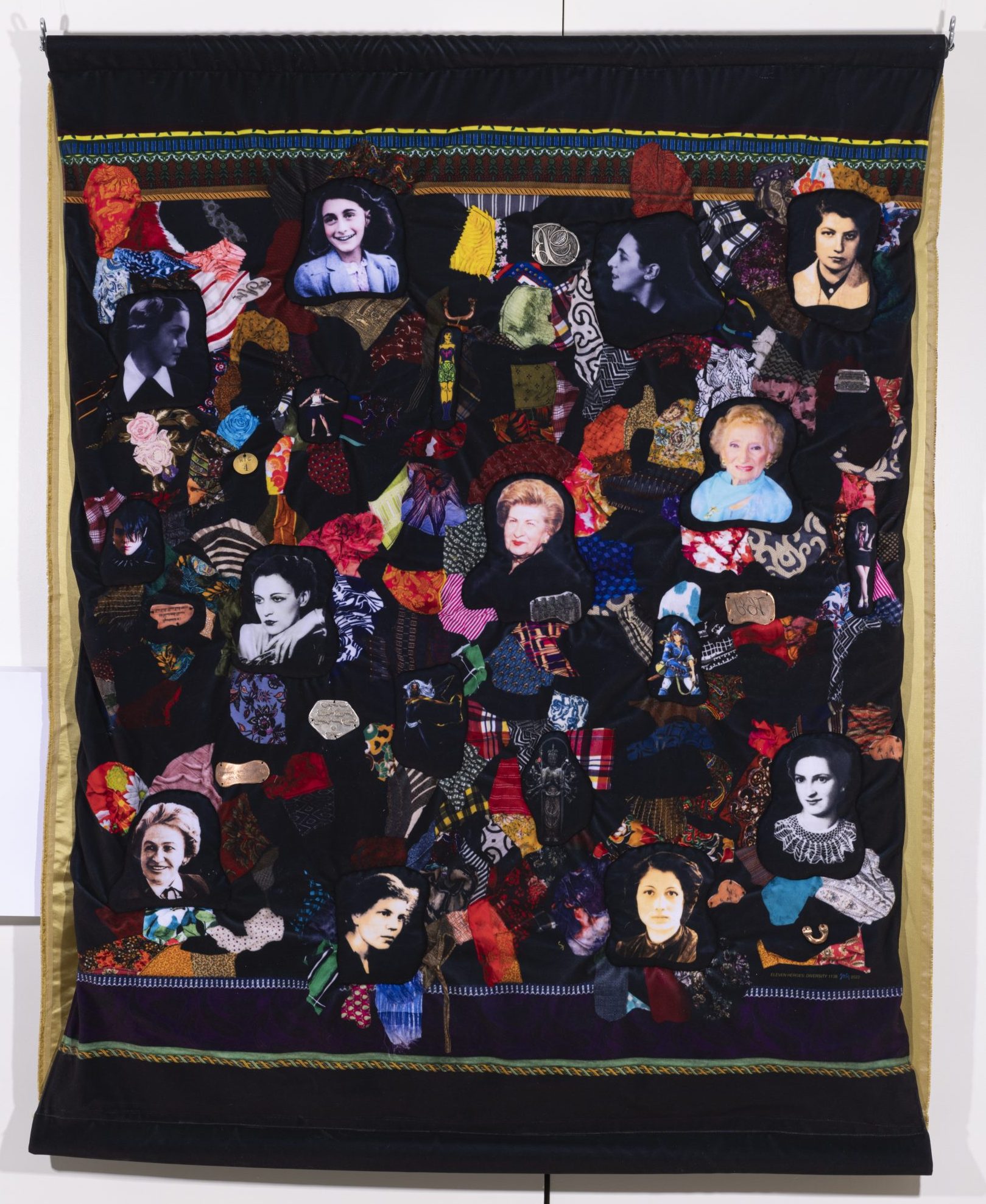
This unique variation Eleven Heroes: Diversity 1138 from the artist Linda Stein’s Holocaust Heroes: Fierce Females series celebrates female heroism during the Second World War.
It memorialises eleven women whose lives and stories represent different aspects of bravery under extremely challenging circumstances.
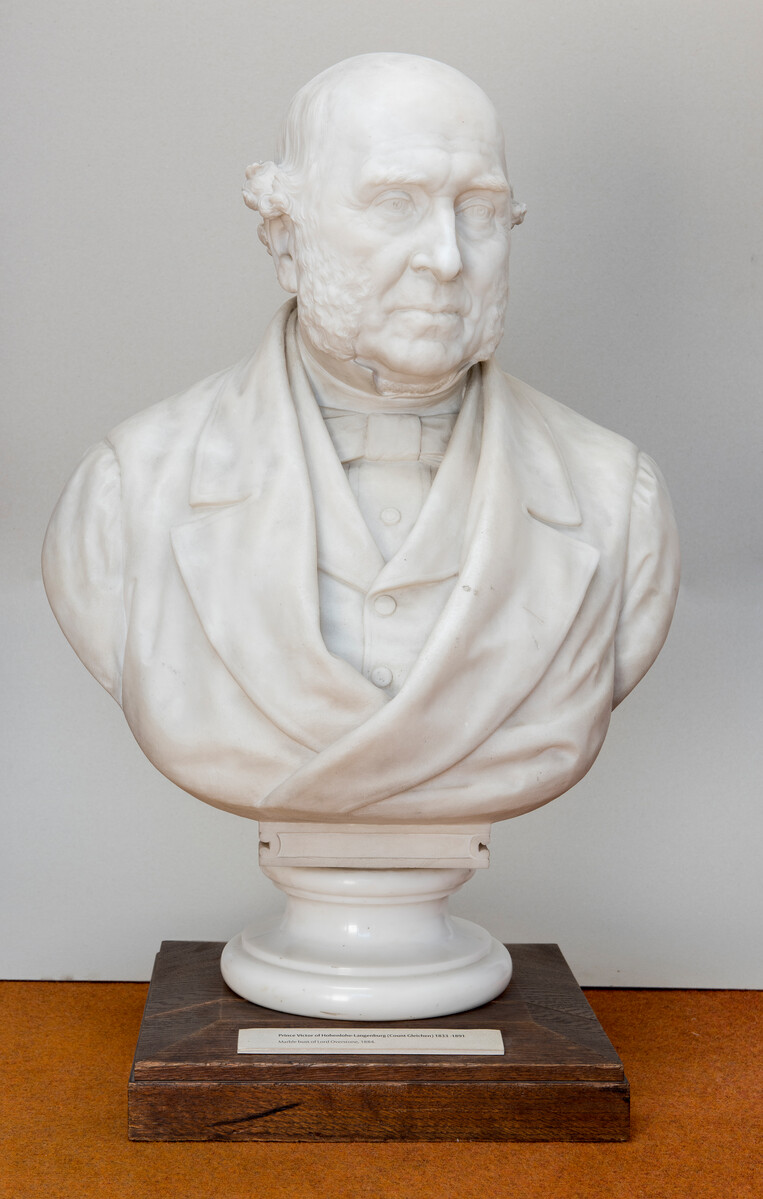
Lord Overstone, Samuel Loyd-Jones, was a banker, politician and a significant figure in Britain’s financial history. After his death in 1883, his daughter Harriet Loyd-Lindsay (also known as Lady Wantage, the founder of Wantage Hall), bequeathed his private library to the University. This collection would come the founding collection of the University Library.
